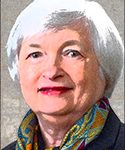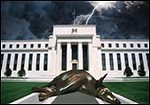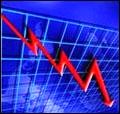-
Recent Posts
- Trump’s “Big Beautiful Bill” Is a Grotesque Giveaway to Fossil Fuel Billionaires While Adding $3.3 Trillion to Nation’s Debt
- Senator Chris Murphy Charges that Trump “Has Opened a Channel for Bribery”
- Congressman Casten: Trump’s Assault on the Rule of Law Is Causing Capital Flight Out of U.S. by Foreign Investors
- Trump’s Approval Rating Drops to 80-Year Low; IMF Says U.S. Tariffs Now Exceed the Highs During the Great Depression
- Nasdaq Has Lost More than 3,000 Points Since Trump’s First Full Day in Office in 2025; the Pain Has Barely Begun
- The Bond Crisis Last Week Was a Global No-Confidence Vote in U. S. President Donald Trump
- Trump’s Tariff Plan Guts $5 Trillion in Stock Value in Two Days; Senator Warren Calls for Emergency Action Before Markets Open on Monday
- Trump’s Attacks on Big Law, Universities, and the Media Have a Common Goal: Silence Dissent Against Authoritarian Rule
- Trump Administration Gives All Clear to Laundering Money through Shell Companies and Bribing Foreign Officials
- Four Megabanks on Wall Street Hold $3.2 Trillion in Uninsured Deposits – Which May Explain Senator Schumer’s Pivot to the GOP to Stop a Government Shutdown
- Here’s What Came Crashing Down Yesterday for Trump’s “Genius” Guy, Elon Musk: Tesla Stock, Access to Twitter (X), His Years of Secret Calls with Putin
- After Banning the Associated Press, Trump Is Now Targeting Specific Journalists That He Wants to See Fired
- Closely Watched Atlanta Fed Model Predicts Negative U.S. Growth in First Quarter
- Trump’s Gangster Diplomacy Makes Front Page Headlines Around the Globe
- Who Benefits Alongside Elon Musk If He Succeeds in Killing the CFPB: the Megabanks on Wall Street that Underwrite His Tesla Stock Offerings
- In Trump 1.0, the State Department Used Taxpayer Money to Publish a Book Elevating Elon Musk to a Superhero; It Was Funded by USAID, the Agency Musk Wants to Quickly Shut Down
- News Host Joy Reid Raises Threat of Trump Selling U.S. to Putin; Ten Days Later Her Show Is Cancelled
- Elon Musk’s DOGE Appears to Be Violating a Court Order; It Has Taken Down Hundreds of YouTube Videos that Educate Americans on How to Avoid Being Swindled
- Barron’s Releases Audio of Jamie Dimon Cursing Out His Workers at a Town Hall, as Dimon Plans to Dump Another One Million JPM Shares
- There’s One Federal Investigative Agency that Neither Trump nor Elon Musk Can Touch: It Just Opened an Investigation into DOGE
- Elon Musk’s Companies Were Under Investigation by Five Inspectors General When the Trump Administration Fired Them and Made Musk the Investigator
- Donald Trump Gives the Greenlight to Goldman Sachs and JPMorgan Chase to Return to Bribing Foreign Officials
- After Tech Geeks Built a Back Door to Loot Billions from FTX, Republicans Refuse to Investigate What Elon Musk’s Tech-Squad Did Inside the U.S. Treasury’s Payment System
- Former Prosecutor, Now U.S. Senator, Informs Tesla That CEO Musk May Be Violating Federal Law and to “Preserve All Records”
- Trump’s Hedge Fund Guy Is Now Overseeing the U.S. Treasury, IRS, OCC, U.S. Mint, FinCEN, F-SOC, and the Consumer Financial Protection Bureau
- As Elon Musk Begins Shutting Down Payments to Federal Contractors, a Strange Money Trail Emerges to His Operatives Inside the U.S. Treasury’s Payment System
- JPMorgan Chase Charged by Yet Another Internal Whistleblower with Cooking the Books
- We Asked Google’s AI Search Model, Gemini, Questions About the Fed and Wall Street Megabanks: It Got the Answers Dead Wrong
- With Trump and Melania’s Crypto Coins Likely to Raise Legal Challenges, Why Didn’t Trump Fire the SEC’s Inspector General in His Purge of IGs?
- Fossil Fuel Industry Could End Up Paying Tens of Billions for LA Wildfires and Deceiving the Public on Climate Change for Decades
- It’s Being Called the Biggest Grift by a President in U.S. History: Trump and First Lady Launch their Own Crypto Coins
- Trump Plans to Install a Fracking CEO to Head the Energy Department and Declare a National Emergency on Energy to Gain Vast Powers
- Fossil Fuel Money Played a Role in the Los Angeles Fires and the Push to Install Pete Hegseth as Secretary of Defense
- When It Comes to Wealth Retention in Retirement, Concrete May Be the New Gold
- Wall Street Watchdog Warns “Clock Is Ticking on a Coming Catastrophic Financial Crash”
- Wall Street Is Sending the Same Message to Americans on Fossil Fuel Financing that It Sent on Cigarettes: Drop Dead
- In a Six-Week Span, this Dark Pool with a Curious Past Traded 3.7 Billion Shares
- Wall Street’s Lobby Firm Hired Eugene Scalia of Gibson Dunn to Sue the Fed for Jamie Dimon
- Postmaster General Louis DeJoy Made $561,051 in Compensation in 2024, as Mail Costs Spiked and Delivery Deteriorated
- Fed Chair Jay Powell Sends a Bold Message to Trump and Tanks the Dow by 1123 Points
- The Head of Fixed Income at T. Rowe Price Makes the Scary Case for the 10-Year Treasury to Spike to 6 Percent
- $663 Billion in Cash Assets Have Gone Poof at the Largest U.S. Banks
- Donald Trump to Ring Bell at New York Stock Exchange Today as Hit List Posters Appear in Manhattan Targeting Wall Street CEOs
- Trump Has a Slush Fund to Prop Up the Dollar – Will He Use It to Prop Up Bitcoin Instead?
- A CEO Assassination; a Billionaire Heiress/NYPD Commissioner; a Secret Wall Street Spy Center – Here’s How They’re Connected
- Despite More than 1600 Tech Scientists Signing a Letter Calling Crypto a Sham, Trump Names a Crypto Cheerleader for SEC Chair
- The Fed Rings a Warning Bell: Hedge Funds and Life Insurers Are Reporting Historic Leverage
- Trump’s Nominee for FBI Director, Kash Patel, Has Businesses Financially Intertwined with Trump
- Donald Trump Is at Risk of Getting Named in a Fossil Fuels Conspiracy Lawsuit
- Trump Is Having Difficulty Getting a Lawyer to Accept the Nomination for SEC Chair: Here’s Why
Search Results for: JPMorgan
UBS Was Quietly Bailed Out in 2008; Now It’s Getting a $173 Billion Backstop to Buy Credit Suisse at 82 Cents a Share

By Pam Martens and Russ Martens: March 20, 2023 ~ Yesterday, the Swiss banking giant, UBS, agreed to a shotgun wedding with its collapsing long-time Swiss rival, Credit Suisse. Switzerland has committed $173 billion in loans and guarantees to the combined firm. A key player in this deal was the central bank of Switzerland, the Swiss National Bank. That’s the very same central bank that had quietly bailed out UBS during the financial crisis of 2008 with the assistance of dollar swap lines from the Federal Reserve (the “Fed”) – the central bank of the U.S. Yesterday, the Fed announced the return of those emergency dollar swap lines as the shotgun wedding of UBS and Credit Suisse failed to quell a spreading banking panic. The way this UBS bailout went down in 2008 was illuminated in the audit of the Fed’s emergency bailout facilities from December 2007 to July 2010 that was … Continue reading
The Next Bomb to Go Off in the Banking Crisis Will Be Derivatives

By Pam Martens and Russ Martens: March 16, 2023 ~ U.S. Treasury Secretary Janet Yellen finds herself in a very dubious position. Under the Dodd-Frank financial reform legislation of 2010, the U.S. Treasury Secretary was given increased powers to oversee financial stability in the U.S. banking system. This increase in power came in response to the 2008 financial crisis – the worst financial collapse since the Great Depression. The legislation made the Treasury Secretary the Chair of the newly created Financial Stability Oversight Council (F-SOC), whose meetings include the heads of all of the federal agencies that supervise banks and trading on Wall Street. The legislation also required the Treasury Secretary’s authorization before the Federal Reserve could create any more of those $29 trillion emergency bailout programs for the mega banks – which had tethered themselves to casino trading on Wall Street since the repeal of the Glass-Steagall Act in 1999. … Continue reading
Moody’s Downgrades Entire U.S. Banking System; Credit Suisse Plummets. Welcome to Banking Crisis 3.0

By Pam Martens and Russ Martens: March 15, 2023 ~ The “Related Articles” linked below (a tiny sampling of relevant articles) will remind our readers just how long and in how many different ways we have been attempting to warn that the U.S. banking system was incompetently structured and at risk of systemic contagion. We have also repeatedly warned that the crony, captured Fed was the worst possible banking supervisor and should be stripped of its bank regulatory powers and restricted to setting monetary policy. We have repeatedly cautioned, citing experts in the field, that the Fed’s stress tests were little more than a placebo and would not prevent the next banking crisis. (Check out our numerous articles at this link. Scroll down.) On July 29 of last year we wrote that Wall Street Megabanks’ Multi-Billion Dollar Blunders Suggest Money Controls as Good as George Bailey’s Uncle Billy and summed up … Continue reading
Two Fed-Supervised Banks Blew Up Last Week; Two More Dropped Over 40 Percent Yesterday; and the Fed Wants to Investigate Itself — Again

By Pam Martens and Russ Martens: March 14, 2023 ~ Last Wednesday, federally-insured Silvergate Bank announced that it was closing shop and liquidating. Its parent’s stock price (Silvergate Capital, ticker SI) had lost over 90 percent of its value over the prior year; it was under a Justice Department investigation for how it moved money for crypto-kingpin Sam Bankman-Fried’s house of frauds; and its depositors were fleeing. Oh – and by the way – its primary regulator was the Federal Reserve Bank of San Francisco. Last Friday, California state regulators closed Silicon Valley Bank and the Federal Deposit Insurance Corporation (FDIC) became the receiver. Its stock price had lost over 80 percent of its market value over the prior year; $150 billion of its $175 billion in deposits were uninsured, either because they exceeded the $250,000 FDIC cap and/or they were foreign deposits. The bank was effectively operating as a Wall … Continue reading
Bank Stocks Plummet as Bank Runs in the U.S. Gain Momentum at Federally-Insured, Non-Traditional Banks

Editor’s Update: California state regulators shut down Silicon Valley Bank during market hours on Friday, creating mayhem in the stock market’s banking sector. The Federal Deposit Insurance Corporation (FDIC) has been appointed the receiver at the bank. The FDIC issued a statement on Friday indicating that only insured depositors (those with $250,000 or less at the bank) will have full access to their money by Monday. As of December 31, Silicon Valley Bank had $209 billion in assets and $175 billion in total deposits, making it the second largest bank failure in U.S. history, after Washington Mutual which failed in September 2008 during the Wall Street financial crisis. Tragically, according to SEC filings, more than $150 billion of Silicon Valley Bank’s deposits were uninsured, leaving hundreds of the tech startup companies it served unsure of how to make payroll next week. By Pam Martens and Russ Martens: March 10, 2023 ~ … Continue reading
These Charts Scared the Stock Market into a 700-Point Drop Yesterday

By Pam Martens and Russ Martens: February 22, 2023 ~ The Dow Jones Industrial Average plunged 697 points by the closing bell yesterday, wiping out all of its gains this year. Here’s a rundown of what happened. At 2 p.m. ET today, the Federal Reserve will release the minutes of the Federal Open Market Committee (FOMC) meeting it held on January 31 and February 1. The stock market is particularly skittish on the day prior to the release of those minutes, out of concern that an overly hawkish tone on interest rates will tank stocks. Given that skittishness, all the stock market needed for a major selloff was a trigger. It got that when Bloomberg News published this headline at 1:36 a.m. in the morning: Morgan Stanley Says S&P 500 Could Drop 26% in Months. Morgan Stanley’s opinion matters for two main reasons: it has just shy of 16,000 stockbrokers (a/k/a … Continue reading
There Are Very Strange Things Going On at Goldman Sachs

By Pam Martens and Russ Martens: February 7, 2023 ~ Goldman Sachs’ online bank, Marcus, is offering an interest rate on its savings accounts that is 350 times the interest rate being offered by its competitors, JPMorgan Chase and Bank of America. That’s not normal. Not normal at all. (Above screen shots were taken this morning. Chase and Bank of America screen shots come from BankRate; Marcus screen shot comes from Marcus.) Marcus is the online banking platform offered by Goldman Sachs Bank USA – a federally-insured bank backstopped by the U.S. taxpayer. But what 99 percent of Americans don’t know about Goldman Sachs Bank USA is that it is the unit of Goldman Sachs that holds trillions of dollars in derivatives, including the kind of credit derivatives that blew up the U.S. economy in 2008 and would have taken down Goldman Sachs were it not for sneaky bailouts. According to … Continue reading
A Federal Agency Wants to Hear Directly from the Public about Bad Practices at Credit Card Companies

By Pam Martens and Russ Martens: January 25, 2023 ~ Yesterday, the federal watchdog agency – the Consumer Financial Protection Bureau (CFPB) – announced that it wants to hear directly from the public on credit card practices. But since “the public” also includes all of the folks that are paid to carry water for the credit card industry, the voice of the average Joe and Jane is highly likely to be overwhelmed by industry sycophants, as is typically the case. Thus, we are asking our readers to give this matter some careful thought, as we outline below, and if you are so inclined, send your comments to the good folks at the CFPB using this link they have set up. The public has until April 24, 2023 to submit comments but we ask that you do so promptly. Topic 1: The Same Banks that Were Bailed Out by the U.S. Taxpayers in … Continue reading
In 16 Years, the Fed Has Approved 4,506 Bank Mergers and Denied One

By Pam Martens and Russ Martens: January 19, 2023 ~ On Tuesday, Jerome Powell’s Federal Reserve once again thumbed its nose at President Biden’s antitrust directive regarding the creation of more mega banks through merger. This time around, the Fed allowed the Bank of Montreal, with assets of $834 billion, and its subsidiary, BMO Financial, to gobble up Bank of the West, based in San Francisco. Following the merger, Bank of the West is to be merged into Bank of Montreal’s subsidiary bank, BMO Harris Bank. On Friday, July 9, 2021, President Biden released a sweeping Executive Order that warned federal bank regulators against actions that create “excessive market concentration” with specific mention of bank merger activity. One business day later, the Federal Reserve announced that it had approved another bank merger. According to the Fed’s own data, since January 1, 2006, it has approved 4,506 bank mergers, while denying one application. (See … Continue reading
A Sam Bankman-Fried Company Loaned or Invested More than $1 Billion in Clients of its Law Firm, Sullivan & Cromwell

By Pam Martens and Russ Martens: January 17, 2023 ~ In a January 12 Substack column penned by Sam Bankman-Fried, the indicted co-founder and former CEO of collapsed crypto exchange, FTX, he writes that “When I would visit NYC, I would sometimes work out of S&C’s office.” S&C is shorthand for the 144-year old Big Law firm, Sullivan & Cromwell, which has come under withering media attention for attempting to steamroll its way into the position of lead counsel in the FTX bankruptcy proceedings – including investigating its own conduct as outside counsel to Sam Bankman-Fried and his byzantine collection of crypto companies. Wall Street On Parade has been covering the mushrooming conflicts of interest held by Sullivan & Cromwell since two days after FTX (and its herd of more than 100 related companies) filed their Chapter 11 bankruptcy petition on November 11. Today, we will shine an even brighter light … Continue reading

